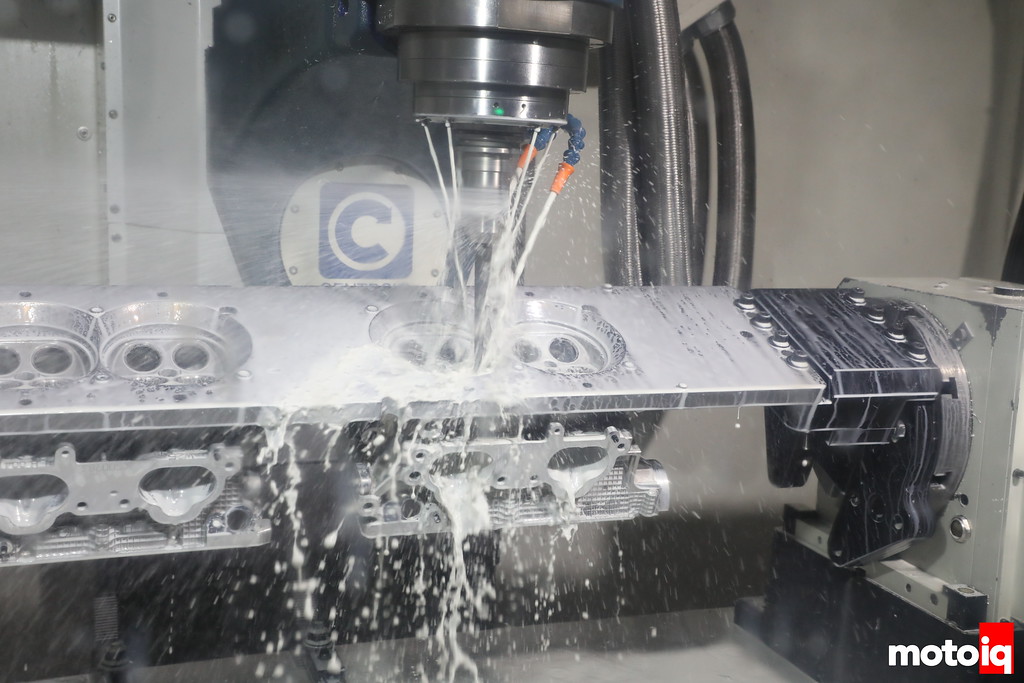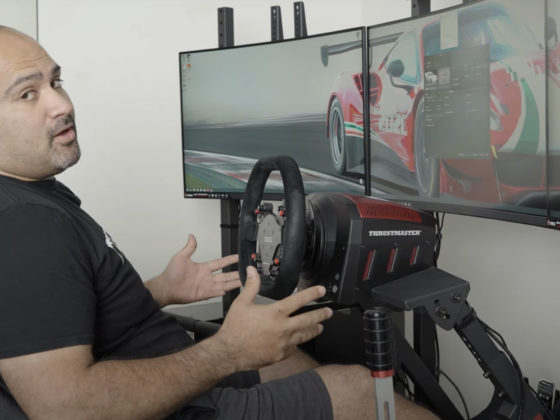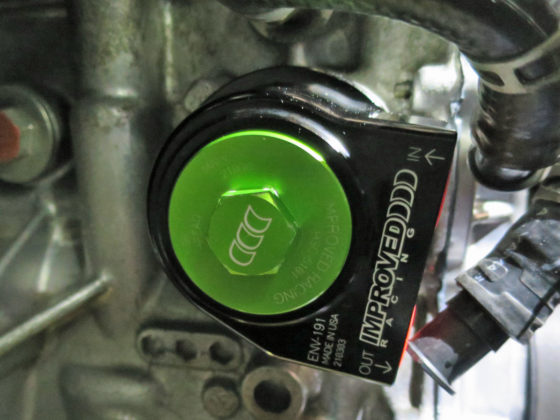
Our GSC beehive springs go in next on top of the seats.

The lightweight GSC titanium retainers are placed on top of the springs.

Next, the head is placed on the PWS valve spring keeper installer machine. A pneumatic cylinder pushes the retainers down so the keepers can easily be put into place.

Here the spring is compressed and the retainers put in place on the valve stem.

Boom the retainer, keepers, spring, and seat are installed. This is so easy it’s fun.

All of our springs are now in place. It’s time to install the cams.




16 comments
“Cast iron cannot be used with stainless steel because of its tendency to gall.”
I had to look that up, because I didn’t think that it would be a good combination of metals together for a valve guide, but didn’t know for sure.
Is the dogleg on the exhaust port the reason for the famous ‘Subaru Burble?’
No, it isn’t, it’s the unequal length exhaust and cylinder pairing.
Can’t the exhaust system account for the unequal length and cylinder pairing?
That is the exhaust system, if you do an equal length 4-1 the motor sounds more normal.
Kudos on torque-plating the head for a valve job. One step further would be to CNC-machine the whole combustion chamber. The as-cast chamber is pretty consistent but i´ve seen irregularities of up to 1,5cc on some Japanese heads.
yes, we found the same
What are the chances that IAG will add the WPC treatment as an option for their motor builds? I’m assuming that for now there would be some level of management that the custom would have to do between WPC and IAG to get the parts treated before assembly etc.
You would have to ask them, they were impressed with the WPC parts but it would add considerably to the cost of a build because of shipping and time delays.
Are the valve stems treated for wear, such as chrome plating or nitriding? If so, does the WPC process affect that treatment negatively?
The exhaust valves are chrome and the intake is nitrided. It won’t affect them.
I’m impressed the valve clearances can be computed and they are all the same.
I’ve seen a couple companies in Germany offering CNC golf ball machining to the intake valves. (@ngmotorsports on Instagram). Do you think this would make any difference to the flow based on golf ball aero principles? I haven’t seen them release and benchflow data.
I personally think it’s not worth the effort in a general sense. In some cases, you might want to thicken the boundary layer in some places to improve velocity.
nice build
too bad you miss a few important things
only real subie builders know
Like what? We are real engine builders and IAG is one of the best Subie engine builders in the country with a winning track record in actual competition.
Get real ken. Fess up.